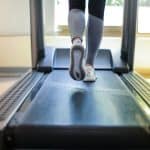
Burden of cancer attributable to sedentary behaviour in Germany: an epidemiological analysis of survey Data
February 6, 2025
News: New employment opportunity at the University of Prince Edward Island!
February 18, 2025A new study entitled “Physical activity and sedentary behaviour amongst children with obesity – exploring cross-sectional associations between child and parent” was recently published in Journal of Activity, Sedentary and Sleep Behaviors. A summary and citation is included below.
ABSTRACT
Background
Physical activity (PA) in childhood is critical for establishing a healthy lifestyle across the lifespan, particularly to treat and prevent obesity. This study aimed to explore PA and sedentary behaviour (SED) in 6–12-year-old children with obesity and their parents, and possible associations in these behaviours between children and parents.Methods
Children referred to outpatient paediatric healthcare for obesity treatment and one of their parents wore accelerometers (Axivity) on their hip during seven consecutive days. Accelerometer data were processed using the 10 Hz frequency extended method. Correlations between child and parent PA and SED, respectively, were analysed using intra-class correlation coefficient.Results
Thirty-nine children (19 female) and 38 parents (20 female) were included. The mean age of the children was 9.7 years (SD 2.0) and the mean parent age was 42.2 years (SD 6.1). The mean child BMI-SDS was 3.0 (SD 0.4). Fifty-seven % of the parents were born in Sweden, 16% in other European countries, and 27% outside Europe. Children spent an average of 9.8 h/day in SED, while parents spent an average of 12.3 h/day. The mean daily time spent in low-intensity PA was 3.9 h for children and 3.4 h for parents, while moderate-to-vigorous intensity PA averaged 0.7 h/day for children and 0.3 h/day for parents. Only six of the children (15%) reached the recommended minimum of 60 min of moderate-to-vigorous intensity PA per day and only two parents (5%) reached the recommended weekly minimum of 150 min of moderate intensity PA. Child and parent SED was significantly correlated, although the correlation was weak (ICC 0.14; p = 0.017). No statistically significant correlations were found for any of the analysed PA intensity levels.Conclusions
The findings indicate an association between children’s and parents’ SED in this sample of school-aged children with obesity, while no association was observed in PA behaviour. Generalisability of our findings is limited and more research is needed– in larger samples, other settings, and using longitudinal designs– to better understand the potential links between the PA patterns of children with obesity and that of their parents.
CITATION
Lundh, H., Arvidsson, D., Greven, C. et al. (2025). Physical activity and sedentary behaviour amongst children with obesity – exploring cross-sectional associations between child and parent. Journal of Activity, Sedentary and Sleep Behaviors, 4, 2. https://doi.org/10.1186/s44167-025-00072-0
Photo by Yan Krukau on pexels




